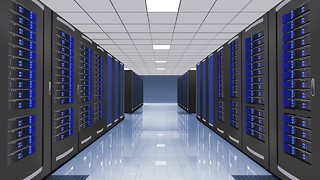‘I enjoy people enjoying the works in my collection’: meet the art-collecting Warden of Robinson College
Miles away from the elitism usually associated with the art collecting world, Sir Richard Heaton prefers discovering and interacting with new artists himself

Most people might be surprised to hear about a student stepping foot inside their college master’s house once— let alone four times. But Sir Richard Heaton, the Robinson College Warden (the red-brick term for ‘master’) has made this possible by generously opening up his Warden’s Lodge to a wide range of events this last year. From making poetry out of cut-out words on his patio to a cheese and wine evening in the dining room, the highlight of every event has been the tour of the impressive art collection that decorates his home.
“I don’t feel remotely exploitative or elitist in playing in that market”
Sir Richard tells me that the first real artwork he “bought commercially” was when “there was a pop-up show called Affordable Scottish Art” while he was acting in the Edinburgh Fringe. He vividly recounts “lots of brightly coloured Glasgow paintings” from which he selected his first piece. However, it was only when he brought it home and his mother remarked “you’re going to be an art collector” that this one-off purchase became a life-long habit. He claims at the time he “didn’t really think anything of it. But she was right. I’ve always wanted to surround myself with pictures. And I’ve always enjoyed the process of choosing and buying and talking to artists.”
It’s this process of discovery and interaction that draws Sir Richard most towards the world of art. He explains that he’s “not a collector in the Frieze-art sense of the word”— referring to the massive and highly-priced Frieze art fairs in London. Although he enjoys going to Frieze to “look around as a fascinated tourist,” he prefers to find his pieces from individual artists. He explains that art collecting can be an “extraordinary world of high net-worth individuals; and investments; and hedging; and all sorts of things which I’m just not terribly interested in. And I can’t afford to be interested in,” he quips. For him, “one of the agitators to the elitism charge is that if you buy contemporary work you’re either doing high-end purchasing”. Sir Richard argues the other case is when “you’re buying directly from artists.” He claims that “if they’re making a sale early in their career it’s a pretty good thing. So I don’t feel remotely exploitative or elitist in playing in that market. I’ve got no apologies for doing that.”

But for some, the elitism goes beyond the expense. There's elitism in the experience of art, with many feeling self-conscious that they’re expected to read and respond to pieces in a certain way. However, the Warden insists that “people don’t need to be taught in order to respond to colours and shapes and emotion and mood.” He explains that when he opens his collection up to guests, “I enjoy people enjoying the works in my collection. Everyone responds in some way. And I don’t think there’s a correct way of looking at a painting.” He insists that art doesn’t have to be snobby, joking about how he’s organised the paintings in his office “pretty basically into shapes down this end and people down that end. There’s nothing terribly sophisticated going on.”
“It’s got more voices. It’s like a choir”
For him, “one of the lovely things about art is that it rewards any degree of engagement.” Shifting his gaze to one of my favourite pieces in the room he explains that he enjoys ‘hearing artists talk about their art more than I enjoy speaking about art myself.’ He tells me how the artist behind this “underwater-y” piece was “brought up in Tehran” and is trying to reclaim her memory of what cinemas looked like in her city. So you can equally “respond to it as a blue painting” or, perhaps more deeply, “as an evocation of memory.” Ultimately, he believes that “art— and the creation of artworks— stimulates people,” going on to explain that he’s a trustee of the Koestler Trust which “encourages the creation of art by people in prisons.”
As we move from the office to the tour of the Lodge itself, there is a clear effort in curating a bold collection, not only of diverse pieces but from diverse artists. From the urinal he tells me he’s planning to make the centre-piece of his “gallery room” to the stunning photograph ‘You Too Can Touch the Moon’ by Tejal Shah, there’s something to catch the eye of everyone. He explains that “art being representational is a really interesting theme for me. A bit like surrounding yourself with friends.” Sir Richard tells me how “at one stage I looked at my collection and I realised it was 75% men or that I had lots of Indian art” but “I didn’t have any British-Asian art.” He encourages people to prompt themselves to “diversify” their outlook and expand their horizons. Not only has the Warden of Robinson College enjoyed the process of diversifying but he thinks his “collection is more interesting” because “it’s got more voices. It’s like a choir.”
 Features / Beyond reality checkpoint: local businesses risking being forced out by Cambridge’s tourism industry15 October 2025
Features / Beyond reality checkpoint: local businesses risking being forced out by Cambridge’s tourism industry15 October 2025 Comment / Bonnie Blue is the enemy, not the face, of female liberation13 October 2025
Comment / Bonnie Blue is the enemy, not the face, of female liberation13 October 2025 News / Cambridge climbs to third in world Uni rankings11 October 2025
News / Cambridge climbs to third in world Uni rankings11 October 2025 News / Join Varsity this Michaelmas13 October 2025
News / Join Varsity this Michaelmas13 October 2025 Features / How to spend a Cambridge summer12 October 2025
Features / How to spend a Cambridge summer12 October 2025










